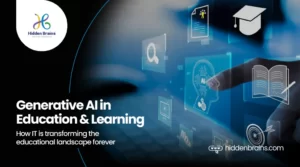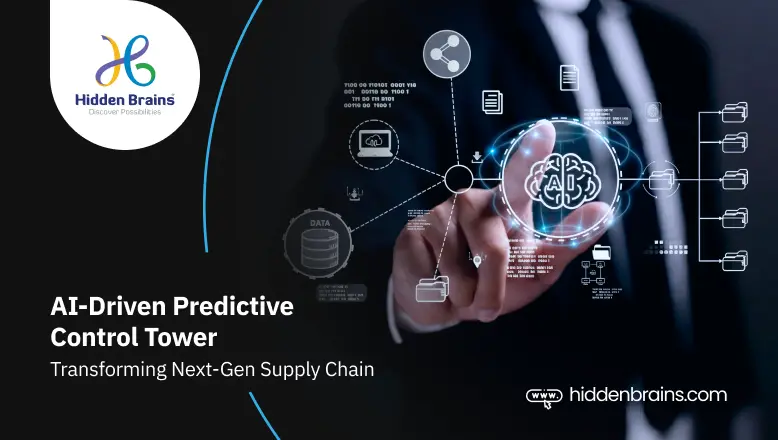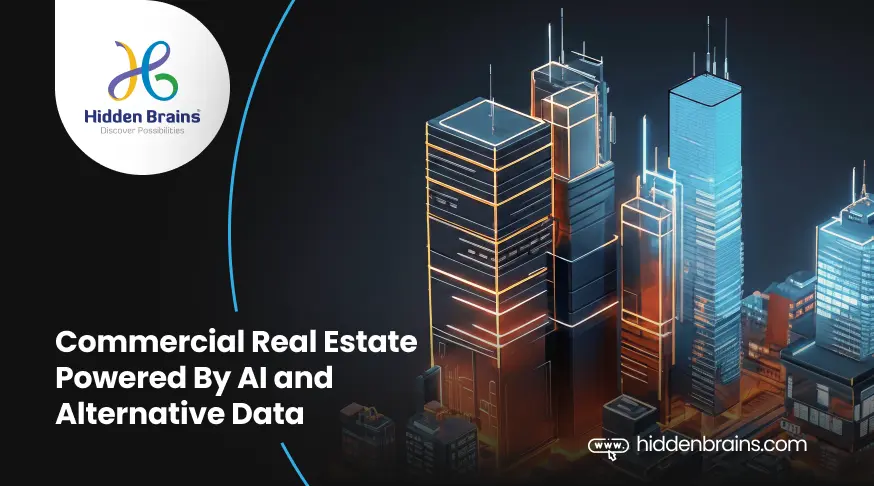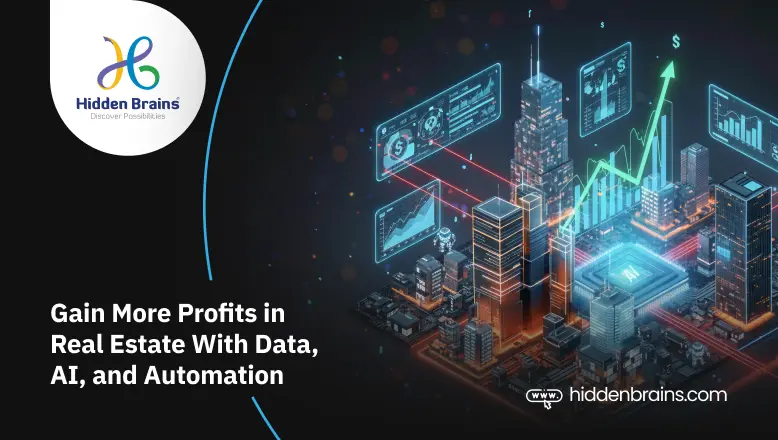As AI continues to impact industries worldwide, its influence in the education industry is also increasing. The role of generative AI in education has transformed the way students learn new things, and it influences the teaching and learning practices of teachers and educational institutions.
According to research conducted by MarketResearchBiz, global AI in teaching and learning market is expected to grow at a rapid rate of 39.5%. Experts estimate that the market volume will reach $7,701.9 million by 2033, up from $299.8 million in 2023. This number shows the total acceptance of artificial intelligence in the education sector.
The World Economic Forum presented the Education 4.0 Framework in 2020, a strategic educational guideline that incorporates Artificial Intelligence as an essential component of this framework. The leading educators believe that AI-powered educational solutions can help educators transform learning into an engaging experience for the learners.
AI-powered educational solutions offer several benefits, from student assessments and automating administrative processes to 3D classrooms. Want to know everything about this technology in education industry? Read this blog till the end.
Table of Contents
You may like to read The Benefits of Building a Custom e-learning solution for your business, which provides captivating insight.
What Is Generative AI In Education?
So, what is generative AI for Learning? It comprises advanced learning models like ChatGPT or Gemini that can create meaningful learning content or images based on your specific requests or prompts. Neural Network-Based models help educators and students in creating personalized student materials and learning modules suitable for the classrooms.
There are plenty of Automated Intelligence use cases in education. This innovative technology can be used to develop personalized learning materials for students based on their interests and individual capabilities.
Ed-tech industries have started using AI-enabled language learning platforms and online tutoring hubs to simplify the learning process and experiences. Furthermore, educational boards are also using this smart technology to assess answer sheets and evaluate results at a large scale. AI has a huge role in the rapid development of Ed-Tech platforms. A story of a European Ed-Tech platform might give you an idea about the power of Machine Intelligence in revolutionizing this sector.
Key Technologies Used To Build AI-Based Teaching Models In Education
Developing a model for AI for students requires cutting-edge AI-powered tools, frameworks, and a strategic approach. Intelligent education models can help students and educators develop personalized learning content and training content materials. Key Technologies used to build models in education include:

1. Natural Language Processing (NLP):
One of the primary tech stacks included in a Generative AI model is NLP. It transforms machine languages into texts that humans can understand and assists in creating personalized study materials, explanatory texts, or short notes on any concept.
2. Machine Learning (ML):
Machine learning solutions and algorithms are used to train advanced systems. With the help of these algorithms, these systems acquire large amounts of data and adapt to new learnings. ML leverages various learning models to train intelligent frameworks that allow them to create effective educational content.
3. Deep Learning:
AI-Driven learning models are equipped with deep learning architectures, such as neural networks, which allow these systems to process vast amounts of data to generate accurate and effective educational content. Educational frameworks also utilize recurrent neural networks and transformers that facilitate sequential data processing.
4. Generative Adversarial Networks (GANs):
AI-powered educational models also use cutting-edge technology, generative adversarial networks (GANs), to create visual content appropriate for immersive learning environments. GANs can help AI generate animations, video illustrations, and virtual 3D simulations to make classroom teachings more entertaining and interactive.
5. Reinforcement Learning (RL):
Another critical tech component in higher education is reinforcement learning (RL) algorithms. RL algorithms are the cornerstone of creating persistent and accurate content. These algorithms reward intelligent systems for generating accurate, relevant, and consistently improving output. RL is highly effective for building and incorporating adaptive learning frameworks.
6. Data Annotation & Processing Tools:
Automated content generation models largely depend on high-quality processed datasets. Therefore, these models need high-end data processing tools that can process, filter, streamline, and structure relevant educational information. Optimized and clean educational data can train AI models more effectively and improve the quality of their outcomes.
7. Cloud Computing Platforms & GPU:
Cloud platforms are essential components for efficiently training AI systems. Platforms like AWS, Google Cloud, and Microsoft Azure provide these frameworks with adequate computational power to process and decode datasets effectively. Cloud platforms integrate GPUs with servers to accelerate the data training process.
Also Read: Why Augmented Reality Is The Next Big Thing In The Education Sector
8. APIs & Frameworks:
Many frameworks are available that can simplify the deployment of AI models in education and learning. TensorFlow, PyTorch, and Hugging Face are some of the popular frameworks used to support data training and processing. OpenAI’s GPT is one of the renowned APIs that can seamlessly integrate AI capabilities into popular learning and educational platforms.
Generative AI Use Cases In Education- How Gen AI Revolutionizes Education System:

Generative technology for personalized learning optimizes various aspects of learning and teaching, making the knowledge-acquiring process more engaging and interactive. The following use cases in education are prime examples of how AI-powered learning tools have transformed the educational landscape comprehensively.
1. Personalized Learning Content:
Each student has an individual learning capacity. The process of learning and acquiring knowledge is different for each learner. The traditional learning system failed to offer customized learning material based on students’ abilities to learn and process new knowledge. Artificial Intelligence in learning can help educators design personalized study plans and learning materials by evaluating the strengths and weaknesses of a student. For instance, with the help of AI, educators can develop intuitive, adaptive learning platforms like FUNLEARN to streamline the students’ assessment process.
2. Virtual Tutors & Suggestions:
Driven learning solutions offer intelligent chatbots and virtual assistance. Chatbot development enables these tools to have 24×7 availability for students, allowing them to access top-notch educational content from anywhere and at any time.These chatbots can help students understand complex concepts and solve problems interactively. This particular aspect of generative AI is helpful for regions and nations where students suffer from limited educational resources. For instance, teachers and educators can develop innovative content like visual images, animation, and instructional videos to make learning more simple. As this content becomes more advanced, instructional video production plays a key role in turning complex lessons into clear, engaging, and accessible learning experiences.
3. Curriculum Planning For Educators:
AI also assists educators in lesson planning and updating their syllabus according to the latest knowledge and information trends. With the help of top AI educational tools, educators and teachers can automate their lesson planning process and leverage these tools to create effective assessment materials, question papers, and ideal outlines and guidelines for subjects and courses. Educational technology with AI enables teachers to create multimedia educational content in the form of videos, infographics, and interactive simulations. Eventually, teachers can focus more on mentoring students.
4. Comprehensive Language Learning Hub:
Generative AI technology in teaching and learning has opened new opportunities for ed-tech businesses by enabling them to develop comprehensive language learning platforms and apps. These language learning tools can help users rectify grammar and punctuation while providing learners with real-time feedback regarding vocabulary, fluency, and comprehension. Today, language learning platforms offer online course materials for all languages across the globe. Powered by advanced learning models, these platforms provide users with voice-enabled phonetics.
5. Special Education Support:
AI in modern education offers a wide range of benefits to students with special needs and cognitive difficulties. With the help of advanced technology, visually impaired students or those with hearing loss issues can overcome their learning challenges. Intelligent systems provide text-to-speech tools and powered hearing devices to simplify learning. With the support of these learning solutions, individuals with cognitive disabilities can acquire and process new information more effectively. Generative models for education help educators promote inclusivity and ensure easy accessibility to quality education for everyone.
6. Research & Knowledge Exploration:
With the help of smart education technology, students, and academicians can get effective summaries of renowned research papers and study journals just within a few seconds. In addition, with the help of these tools, learners can receive simple explanations of complex topics, allowing educators and researchers to receive insightful and accurate excerpts of complex domains like astrophysics, Quantum, and Economics. Generative AI in higher education can help skilled students effectively increase their learning curve for advanced subjects. Moreover, AI models can help top-grade researchers in extracting relevant information from big e-books or research documents.
Benefits Of Implementing AI in Modern Education:
Implementing AI-driven learning solutions has plenty of benefits. Powered education and learning apps help educators and students enhance their learning experiences, improve teaching practices, and optimize the learning process significantly. Let’s explore the benefits of this technology for educational innovation:
- Improved Learning Outcomes: AI-Based educational platforms offers personalized learning and intelligent tutoring solutions to increase students’ knowledge levels. These tools improve the overall educational experience across the spectrum.
- Increased Engagement: Several studies show that implementing AI in EdTech can significantly boost the critical thinking abilities of students and help them enhance their creativity and problem-solving skills by making learning more engaging.
- Automates Administrative Tasks: Implementing AI in education can significantly improve the administrative workflow of any educational institution. It automates routine tasks like student enrollment and scheduling and saves time.
- Cost-Effective Solutions: Deploying AI in EdTech academic institutions can reduce costs by generating diverse academic materials. It enables educators to produce diverse study materials cost-efficiently.
AI for Learning Enhancement – Real-World Examples:
Top educational facilities and leading Ed-Tech brands have implemented gen AI models and tools to build successful educational platforms and knowledge hubs that have revolutionized the education system of the world. Let’s check their names and use cases with the help of a table:
| Brand | Use Cases | Number of Users/Learners | Year of Establishment |
|---|---|---|---|
| Google Learning | AI-powered personalized learning, AI-assisted tutoring, AI-generated educational content | Billions of users worldwide | 1998 |
| Microsoft Learn | AI-powered learning platforms, AI-assisted language learning, AI-driven educational analytics | Billions of users worldwide | 1975 |
| AWS Learn | AI-powered personalized learning, AI-driven educational content, AI-assisted tutoring | Millions of users worldwide | 1994 |
| Duolingo | AI-powered language learning, AI-driven personalized learning paths | Millions of learners worldwide | 2012 |
| Khan Academy | AI-powered adaptive learning, AI-driven personalized learning paths, AI-assisted tutoring | Tens of millions of learners | 2006 |
| Coursera | AI-powered course recommendations, AI-driven personalized learning experiences | Millions of learners | 2012 |
| Udemy | AI-driven course recommendations, AI-powered personalized learning paths | Millions of learners | 2010 |
| Quizlet | AI-powered flashcards, AI-driven personalized learning | Millions of students | 2005 |
How AI Solves Common Educational Challenges:
Generative AI is revolutionizing the education sector by providing solutions for various issues experienced by educational institutions, teachers, and students. Let’s see how:
For Educational Institutions:
- Resource Optimization:
- Automated Operations: AI can automate administrative works like grading, scheduling, and report generation to allocate resources towards more strategic initiatives.
- Scalable Personalization: AI-enabled customized learning experiences can be scaled to reach thousands of students, maximizing the effectiveness of scarce resources.
- Increased Accessibility and Inclusiveness:
- Language Translation: AI-powered translation tools make it easy to translate educational content for students from different languages.
- AudioBooks: Without assistance, many teachers still chat with students who have never seen the need for online classes, only in case they are ready, given that they have received Empowerment Advice for their Stage of life.
For Teachers and Educators:
- Reduced Workload:
- Automation of Tasks: AI can perform tedious tasks such as assignment grading and feedback generation, freeing up teachers to engage in more meaningful interactions with students.
- Personalized Learning Plans — AI-powered tools can assist teachers in creating tailored learning plans for each student, maximizing their instructional time.
- Professional Development:
- Analytics Powered by Immigration: Immigration can help identify trends and highlight students who need supplementary help to inform instructional practice.
- Tailored PD: AI can recommend personalized professional development courses for each teacher.
For Students:
- Personalized Learning:
- Adaptive Learning: Responsive learning platforms can customize the difficulty level of content according to each student’s speed and learning style.
- Instant Corrections: Artificial intelligence-based tutoring platforms can give students instant advice on their work to avoid future mistakes.
- Enhanced Learning Experience:
- AI simulations and gamified learning will make it fun. AI-driven simulations or gamified learning can also help visitors explore new concepts more interactively!
- Creative Expression: AI-Based educational platforms can make students more creative by enabling them to write stories and poems while showcasing their art and painting work.
Transform Your Enterprise With HiddenBrains’ Generative AI Solutions:
Do you want to build an intuitive and interactive e-learning platform for your business? HiddenBrains provides an entire solution of AI services to transform the education industry. Whether it is a personalized learning platform that adjusts to every student’s unique needs, administrative tools that save time and resources, or even AI assistants that generate compelling content for you to deliver collaborative classroom experiences, we offer you end-to-end solutions that fit your institution’s agenda.
Join us in the exciting new era of education that embraces robust AI policies to enrich teaching, enhance efficiencies, and promote inclusivity.
Final Words:
The power of generative AI in education industry has taken the by storm and is expanding its influence across various domains. AI has democratized the education sector by allowing more students and educators access to the latest information while acquiring new knowledge. Moreover, with its help, students can improve their learning outcomes, operational efficiency, and learning activities cost-efficiently.
FAQs:
How Does AI Enhance The Learning Experience For Students?
AI-Powered Education can generate personalized educational content and learning guidelines to meet the requirements of individual students. It offers instant feedback and establishes the pathway for an effective adaptive learning system. It offers unique tools for students with disabilities and cognitive challenges.
Can AI Replace Teachers In The Classroom?
No. AI-powered e-learning solutions are not designed to replace classroom teachers and educators. Instead, teachers and educational assistants can leverage platforms and tools to streamline, optimize, and simplify their routine work, like lesson planning, creating study curricula, and learning about innovative teaching methods and practices.
What Are The Key Challenges Of Implementing AI In Education?
The main challenges include high initial costs, the need for extensive teacher training, data privacy concerns, and ensuring equitable access to AI tools in under-resourced schools or regions. Addressing these issues requires strategic planning and collaboration among educators, policymakers, and technology providers.
How Can Educational Institutions Benefit From AI-Powered Tools?
Top schools, academic institutions, and colleges can implement AI in higher and advanced education processes to meet the diverse needs of various students. In addition, they can use to evaluate the performance of students, allocate resources effectively, and boost learning outcomes.
How Does AI Support Teachers In Their Professional Growth?
AI-powered tools offer personalized professional development by analyzing teaching methods and providing tailored recommendations. Educators can also access AI-generated training resources and workshops to upskill and stay current with new teaching technologies.






























































































![Sales & Distribution [Oil & Gas] Sales & Distribution [Oil & Gas]](https://www.hiddenbrains.com/blog/wp-content/themes/blankslate/assets/images/sales_and_distribution-icon.74d08193.svg)

![Fluid Terminal Management [Oil & Gas] Fluid Terminal Management [Oil & Gas]](https://www.hiddenbrains.com/blog/wp-content/themes/blankslate/assets/images/fluid_terminal_management-icon.4b3a27a4.svg)































![Sales & Distribution [Oil & Gas] Sales & Distribution [Oil & Gas]](https://www.hiddenbrains.com/blog/wp-content/themes/blankslate/assets/images/sales_and_distribution-icon.74d08193.svg?1.0.0)
![Fluid Terminal Management [Oil & Gas] Fluid Terminal Management [Oil & Gas]](https://www.hiddenbrains.com/blog/wp-content/themes/blankslate/assets/images/fluid_terminal_management-icon.4b3a27a4.svg?1.0.0)



























































































































































































